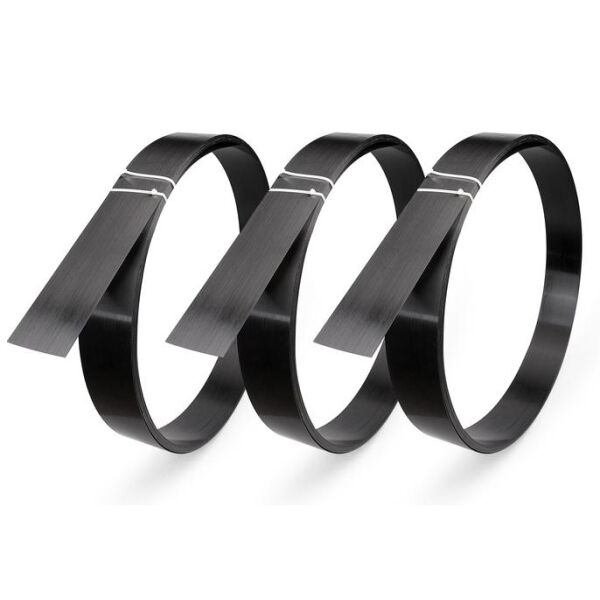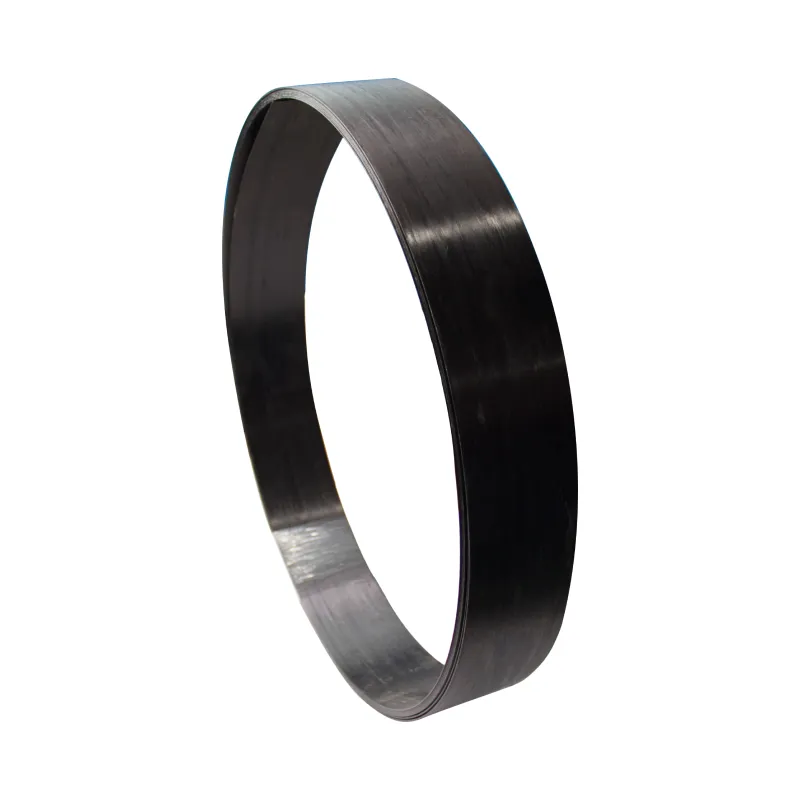Carbon Fiber Plates in Modern Aerospace Solutions
Structural Airframe Components
The fact that carbon fiber is so light plays a big role in cutting down on aircraft weight, which makes planes burn less fuel overall. These days, manufacturers are putting carbon fiber plates into lots of modern airplane structures because they need something strong but not heavy. The results speak for themselves really. Some newer models have managed to save around 20 percent on fuel costs just from being lighter on the whole. According to research published by the American Institute of Aeronautics and Astronautics, there are also safety advantages here worth mentioning. Carbon fiber actually has better strength compared to its weight than many traditional materials, making parts last longer and work more reliably when subjected to all sorts of stresses during flight operations.
Within structural design, carbon fiber plates enable engineers to craft robust yet lightweight components essential for modern aviation. They are pivotal in optimizing aerodynamic performance and safety, making them indispensable for cutting-edge aerospace solutions.
Heat-Resistant Engine Parts
Carbon fiber plates play a key role in making engine parts that can handle intense heat without breaking down. Most carbon fiber materials can take on temperatures well over 1000°C, something regular metals just can't manage when engines run hot during long drives or heavy loads. Unlike traditional metal components, carbon fiber doesn't expand as much when heated, so it stays stable even when things get really warm inside an engine compartment. This makes all the difference in how well the engine performs over time, especially in racing applications where every degree matters for peak performance.
Industry standards from the Federal Aviation Administration show that using carbon fiber in engine parts actually makes them last longer and cuts down on maintenance expenses. Carbon fiber stands up really well to heat stress and just plain wears better than other materials, so there are far fewer breakdowns and repairs needed over time. This means big money savings compared to what we've been using before. While carbon fiber does cost more initially, it pays off in the long run because planes stay in service longer without constant fixes, which ultimately improves how efficiently airlines operate day to day.
Automotive Industry Breakthroughs
Weight-Reduced Body Panels
Carbon fiber plates are changing how car makers build body panels, cutting down weight by around half when compared to older materials. Less weight means better gas mileage and fewer emissions coming out of tailpipes, which helps fight climate change across the globe. As people get more worried about what their cars do to the environment, they're starting to prefer lighter vehicles. A recent report by McKinsey suggests we might see carbon fiber taking over as the go-to material in auto manufacturing by 2025 or so. This makes sense given how much interest there is now in green technology. Car companies aren't just following trends anymore either; they need to adapt if they want to stay relevant while meeting stricter emission standards set by governments worldwide.
High-Performance Chassis Systems
Carbon fiber has become really important for making those high performance chassis systems that give vehicles extra rigidity when they need it most during those tight turns at speed. We see this stuff all over racing cars because shaving off seconds on the track matters so much to teams. The pros in the auto world keep talking about these advantages too. Some studies show that adding carbon fiber to the frame cuts down the total weight of a car around 30 percent, which means faster acceleration off the line. What makes carbon fiber special though? It combines incredible strength with surprisingly low weight. That combination is changing how cars are built today, not just for racers but even regular passenger vehicles now get some carbon components here and there for improved handling and fuel economy.

Revolutionizing Sports Equipment Design
Competitive Cycling Innovations
The introduction of carbon fiber into competitive cycling has completely changed the game for racers. Frames and components made from this material are so light they make a huge difference in performance. Riders who switch to carbon fiber bikes often notice they go faster and feel more efficient on the road. Some tests actually show these bikes can be around 40 percent lighter than older models made with steel or aluminum. Look at any big race results and most of the winners will be riding carbon fiber machines. The reduced weight makes all the difference when cornering at high speeds or climbing steep hills during crucial moments in a race. Professional cyclists know this gives them an extra boost when every second counts.
Precision Golf Club Engineering
Golf club manufacturers are really getting into carbon fiber these days because it lets them tweak designs in ways traditional materials just can't match. Big name brands have started incorporating carbon fiber tech throughout their product lines to make clubs feel better at impact. The material absorbs vibrations so much better than steel or titanium, which means players get a smoother hit without that annoying sting in their hands. Serious weekend warriors and pros alike tend to gravitate toward these clubs when they want an edge on the course. Take PGA Tour players for instance many of them swing sticks made with carbon fiber parts because they offer pinpoint accuracy that regular clubs simply don't deliver. As manufacturing techniques improve, we're seeing more affordable options enter the market too, making what was once a luxury item accessible to average golfers looking to boost their game.
Construction Sector Reinforcement
Seismic Retrofitting Applications
Carbon fiber plates have really transformed the field of seismic retrofitting over recent years. Many engineers now favor these plates when strengthening buildings against earthquake damage because they offer a neat solution that doesn't require major disruptions to existing structures while still greatly improving their stability. Research indicates that adding carbon fiber can actually triple the structural strength of buildings, which explains why cities everywhere are increasingly adopting this technology for infrastructure upgrades. What makes carbon fiber so appealing is its economic advantage too. Most engineering publications point out that these materials provide strong reinforcement at a fraction of what traditional methods would cost, since there's no need for massive reconstruction projects. The result? Buildings in earthquake zones become much safer places to live and work without breaking the bank on renovations.
Bridge Strengthening Systems
Carbon fiber plates have become a go to solution for reinforcing bridges thanks to how much weight they can handle and the fact that they help these structures last longer. Government agencies from several states have actually published reports showing real world success stories where carbon fiber was used to strengthen aging bridges, and one big plus is the money saved on maintenance over time. What really stands out about carbon fiber though is its natural resistance to rust and decay, which means bridges built with this material hold up better in places with harsh weather conditions or salty air near coastlines. Structural engineers working on modern infrastructure projects now routinely incorporate carbon fiber technology into their designs because it lets them build bridges that work well today while standing up to whatever environmental stresses might come along tomorrow. This approach helps create more resilient transportation networks no matter where they're constructed.
Medical Device Advancements
Lightweight Prosthetic Solutions
The use of carbon fiber in prosthetics is changing things big time because it makes these devices so much lighter and more comfortable for people who need them. Research shows that folks who get prosthetics made with carbon fiber tend to move around better and generally feel happier with their new limbs. Top medical schools and research centers are pushing for wider adoption of carbon fiber materials since they can be molded and shaped in ways that allow for really personalized fits. This means doctors can create prosthetics that actually match each person's unique body shape and movement needs instead of just offering one size fits all solutions.
Rigid Surgical Instrumentation
The body-friendly nature of carbon fiber means surgeons can make all sorts of tools without worrying about rejection issues, which definitely boosts patient safety during operations. The material stays rigid when needed but still allows for pinpoint accuracy when manipulating delicate tissues something orthopedic and neurosurgeons particularly appreciate according to their feedback. Studies show that hospitals switching to carbon fiber instruments report fewer postoperative complications overall. While no material is completely foolproof, these stats point toward better results across various types of complex procedures where every millimeter matters.
Marine Engineering Applications
Corrosion-Resistant Hull Components
Carbon fiber is now a go-to material for many parts of boat building, especially when constructing hulls, because it stands up so well against saltwater damage. Boats made with this stuff keep their strength even after years battling rough seas and constant exposure to moisture. Research shows that ships with carbon fiber hulls tend to last much longer between repairs compared to traditional materials. The money saved on maintenance alone often pays back the initial investment within just a few years. Yacht builders have been quick to adopt carbon fiber too, since speed and reliability matter most in competitive racing circles. With more shipyards switching to these lightweight yet tough materials, we're seeing real improvements in how long vessels stay seaworthy without breaking the bank on upkeep costs.
Research indicates that carbon fiber's light weight helps boost speed and cut down on fuel consumption for boats and ships alike. Boat builders are definitely taking notice since they want to offer faster yachts without hurting the environment too much. More and more shipyards across the globe are starting to adopt carbon fiber materials because customers demand greener options these days. Marine engineers working on new vessel designs find themselves gravitating toward carbon fiber composites when looking for ways to build stronger hulls that last longer between maintenance checks. The material has become pretty much standard equipment now among high performance racing yachts and commercial fishing boats where every ounce saved translates into real world benefits over time.
Next-Gen Manufacturing & Electronics
Custom Component Fabrication
The latest developments in carbon fiber tech are changing the game for industries making custom parts. With better materials and manufacturing techniques, designers can create components with much less material waste while speeding up production times and cutting down on environmental impact. Industry insiders point out that these improvements make factories run smoother and open doors for new product ideas, especially in places like aircraft manufacturing and car production lines. Take look at what's happening in aviation right now - manufacturers are using carbon fiber's light weight to build stronger yet lighter airplane parts without sacrificing durability. The same applies across many fields where weight reduction matters. What we're seeing is carbon fiber becoming essential in today's factories, delivering real world benefits that address both green concerns and technical requirements simultaneously.
High-Precision Tooling Solutions
Carbon fiber tooling has become really important in precision engineering work these days because it just plain works better than most alternatives when it comes to getting accurate results and lasting tools. Traditional materials simply can't match what carbon fiber brings to the table in terms of faster production speeds and better end products. This matters a lot in industries where quality is everything, think automotive manufacturing or aircraft components. Some studies point to actual improvements from using carbon fiber in tooling setups, showing around a quarter less time lost during production stops. That kind of improvement adds up over time and saves money while running operations smoother. For shops looking to get the most out of their manufacturing processes, switching to carbon fiber makes good business sense. We're seeing this material take hold across various sectors not just because it performs well technically but also because companies want greener options that still deliver strong returns on investment.
Frequently Asked Questions
What are the benefits of using carbon fiber in aerospace components?
Carbon fiber offers a lightweight nature that reduces aircraft weight, enhances fuel efficiency, and provides superior strength-to-weight ratios, improving durability and safety in aerospace components.
How does carbon fiber contribute to automotive efficiency?
In the automotive industry, carbon fiber significantly reduces the weight of body panels and chassis systems, which enhances fuel efficiency and sustainability by aligning with global environmental goals.
Why is carbon fiber favored in sports equipment design?
Carbon fiber's lightweight and customizable properties improve performance in competitive sports like cycling and golf, providing athletes with strategic advantages in their equipment efficiency and handling.
Can carbon fiber contribute to seismic retrofitting?
Yes, carbon fiber plates are increasingly used in seismic retrofitting to enhance structural integrity, offering non-intrusive reinforcement that boosts building strength up to 300%.
Why is carbon fiber important in marine engineering?
Carbon fiber offers exceptional resistance to marine corrosion and improves hull component durability, leading to cost savings and longer lifespans for marine vessels.


